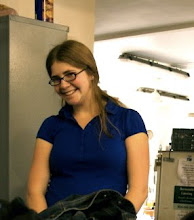Silwan/Ir David is a neighborhood in East Jerusalem just south of the eastern part of the Old City, just abutting the Old City walls. Currently, it is primarily a poor Palestinian neighborhood, although in the late 19th century it served as a neighborhood for Yemenite Jews arriving in the Land of Israel, who were not welcomed by their Ashkenazi counterparts within the Jewish quarter of the Old City. In recent years, there has been an increasing Jewish presence in Silwan, not only residential, but archaeological, educational, and with regards to tourism, through the archaeological site Ir David, claimed to be the location of King David's city and palace.
I visited Silwan with Encounter, as part of an East Jerusalem seminar day through Encounter's Leadership Seminar. We met with a baller young woman, Muna, who works at a community center in Silwan, the Wadi Hilweh Information Center. I knew very little about the area beforehand, other than that it had been the site of recent conflict, and learned from Muna that in fact, it would have been pretty unsafe for me to walk around Silwan on my own. The youth of Silwan see anyone who is not like them (i.e., not Palestinian - whether Israeli, Jewish, tourist, international aid activist, etc.) as "Yahud" - Jew, and therefore settler, the enemy. They haven't had the opportunity to experience anything else. A few statistics (from Muna's powerpoint presentation): Silwan has 55,000 residents, 50% of whom are under the age of 18 - and 75% of those under 18 are living under the poverty line.
 |
| A flag in the office of Wadi Hilweh Info Center |
We heard about the work that Muna's organization does - gives children musical instrument lessons, usually only available to the children of wealthy Palestinian families, a children's drama group, Hebrew and English tutoring - and then took a walk around the city. Muna commented that visitors and tourists to the Ir David archaeological site turn immediately into its entrance and walk through the park, without any awareness that they are in the midst of a Palestinian neighborhood. We walked past that entrance, and kept going down the hill, past the heavily barricaded homes of Jewish settlers, decorated with defiant Israeli flags, seeing the poverty of this small neighborhood.
 |
| a mosque in Silwan, in close proximity to the exit from Hezekiah's Tunnel, part of the Ir David site |
What was perhaps the most disturbing moment of the day was the moment when we turned into Ir David, leaving Silwan behind, and I suddenly realized that I had been there three years ago, when I was working for NFTY in Israel. I hadn't made that connection the week before, because the Silwan I visited bore no resemblance whatsoever to the Ir David I had visited in 2007. But Ir David is lush and green, there is piped in harp music (possibly recorded by King David himself?!?!). As one of the other speakers we met during our Encounter East Jerusalem seminar said, "It's like religious Disney World." The noise, the dust, the traffic of Silwan was non-existent, even though it was a few dozen feet away.
At one point in our tour of Ir David, we stopped, and David started a discussion about the modern political context surrounding this site. This discussion led to another conversation among my classmates about whether or not the modern context surrounding an ancient site has a place in our learning about that site. For me, bli safek, without a doubt, it is impossible to only view the ancient sites that surround me here and to ignore what surrounds them. In this place, in this city, like nowhere else that I have been in the world, the ancient impacts those living, working, loving, fighting there today, and the modern informs how we view and understand the ancient.
 |
| a view of Palestinian homes from within Ir David |




No comments:
Post a Comment